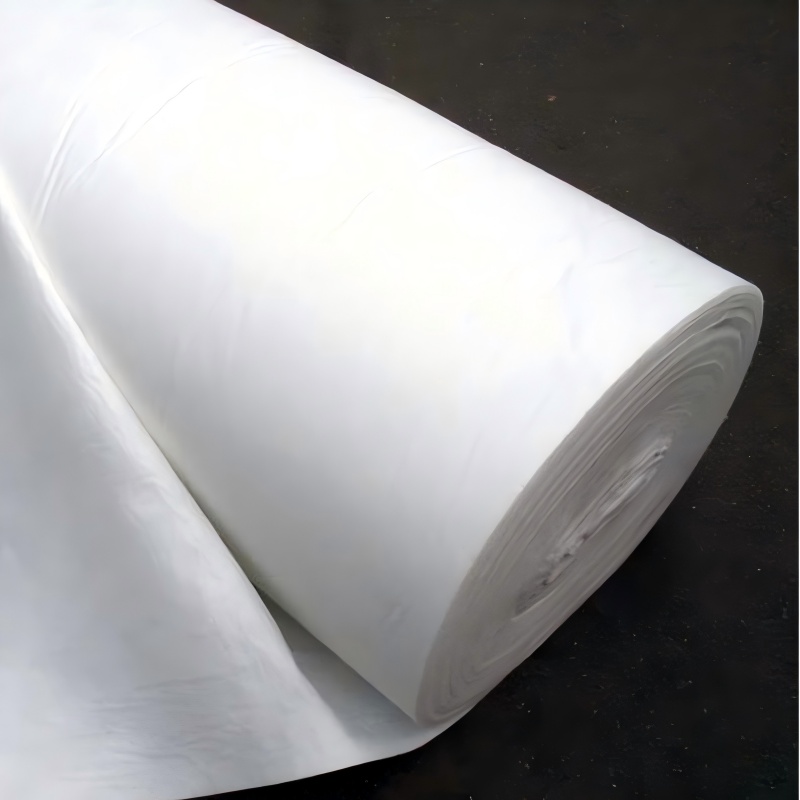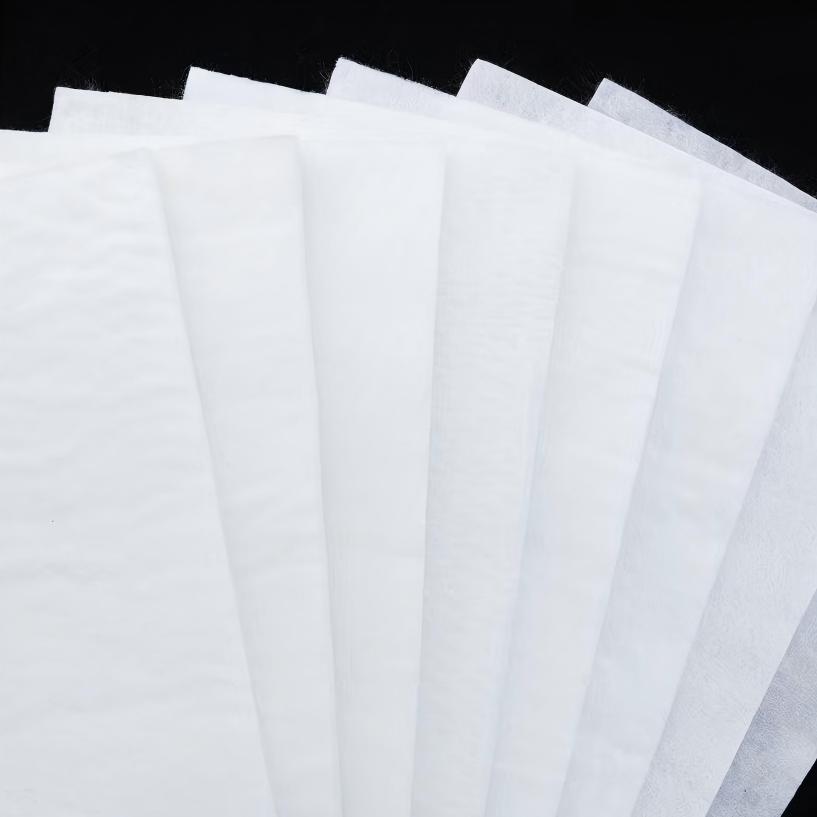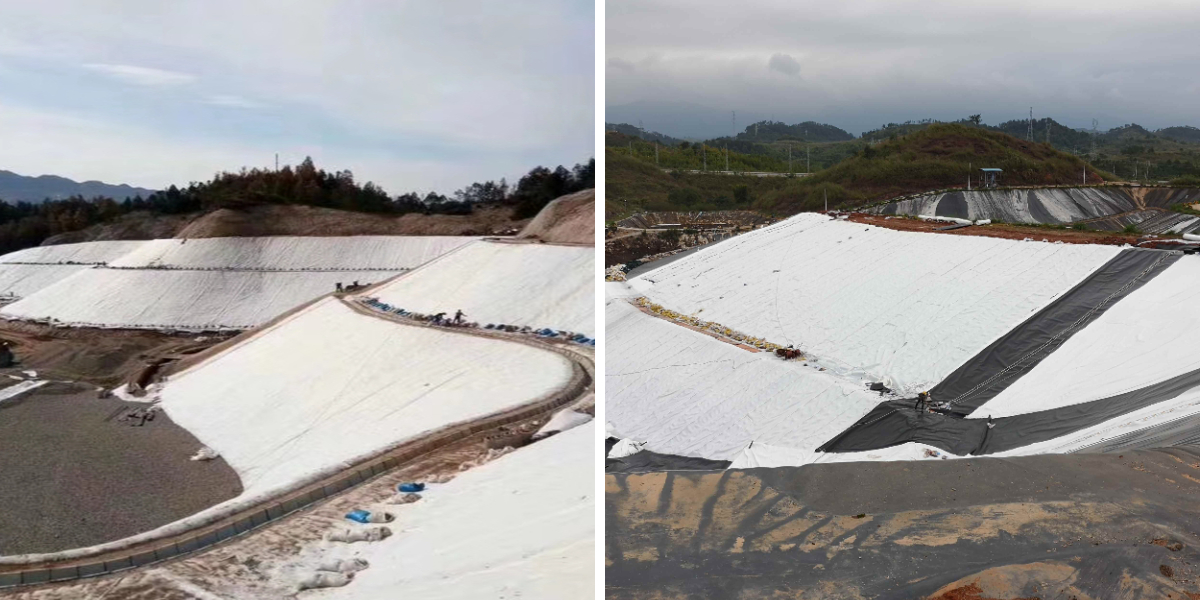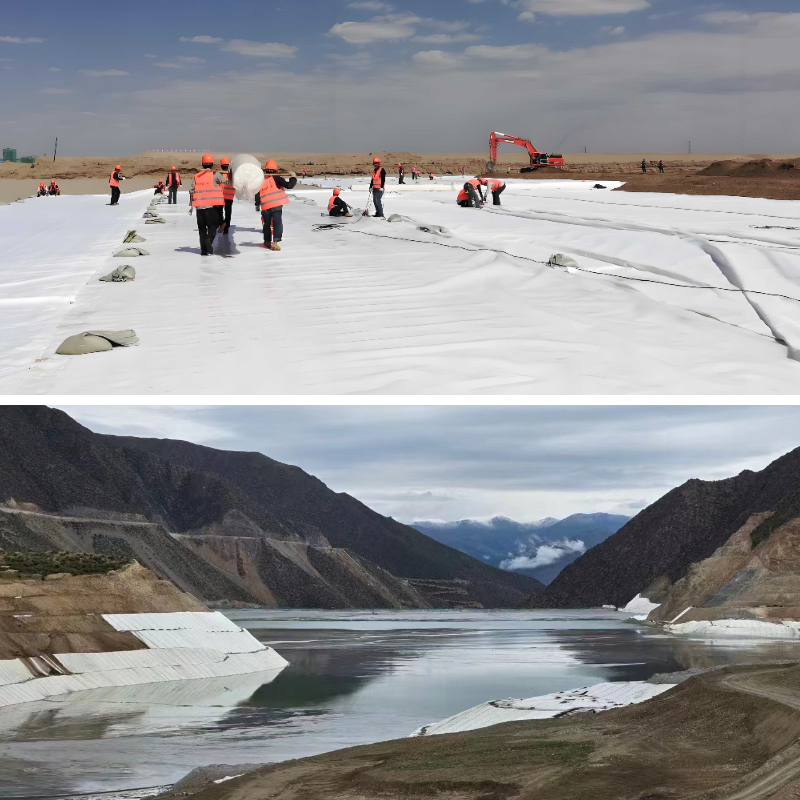Non Woven Geotextile Membrane
1. Economically efficient: Compared to traditional materials such as sand and concrete, it is easier to construct and has lower costs.
2. Environmental protection and energy conservation: Reduce the use of natural materials and minimize the impact of engineering on the environment.
3. Multifunctionality: It has multiple functions such as reinforcement, drainage, filtration, and isolation.
4. Convenient construction: lightweight, easy to cut and lay, suitable for complex terrains.
Product Introduction:
Non Woven Geotextile Membrane is a permeable geosynthetic material made of synthetic fibers (such as polyester, polypropylene, etc.) through needle punching, weaving, or thermal bonding processes. The finished product is in the form of fabric, with a width of generally 4-6 meters (some up to 9 meters) and a length of 50-100 meters. It is divided into two categories: woven geotextiles and non-woven long filament geotextiles. As a core member of geosynthetic materials, geotextiles play the role of an "invisible protective layer" in engineering, with five functions: isolation, filtration, drainage, reinforcement, and protection.
characteristic
1. Permeability and Filtration
There are gaps between fibers that allow water to pass through but block soil particles, fine sand, etc., forming natural drainage channels. For example, in dam engineering, geotextiles can quickly drain groundwater and prevent the foundation from being softened by rainwater.
Non woven geotextiles have higher porosity and better flexibility, making them suitable for filtration and drainage scenarios; Woven geotextiles have higher filtration accuracy due to their compact structure.
2. High strength and deformation resistance
Using plastic fibers such as polyester and polypropylene, they can maintain sufficient strength and elongation in both dry and wet conditions, with high tensile strength and are not easily broken.
Can withstand large tensile forces and enhance soil stability, for example, in slope reinforcement, geotextiles act like "invisible steel bars" to reduce landslide risks.
3. Corrosion resistance and antimicrobial properties
Long term corrosion resistance in soil and water with different acidity and alkalinity, and no damage from microorganisms or insects, with a long service life.
Suitable for harsh environments such as landfills, wrapping waste to prevent harmful substances from seeping into the soil.
4. Lightweight and convenient construction
The material is soft and easy to transport, cut, and lay, and construction can be completed manually, reducing labor costs.
Supports multiple connection methods: overlapping (width ≥ 20cm), stitching (using anti UV suture, width ≥ 10cm), and hot air welding (preferred method, width ≥ 20cm).
5. Environmental protection and multifunctionality
Non toxic, odorless, recyclable, and in compliance with environmental protection requirements.
Through composite processes such as combining with geomembranes, anti-seepage and puncture resistant materials can be formed, expanding their application scenarios.
Product Parameters:
project | metric | ||||||||||
Nominal strength/(kN/m) | |||||||||||
6 | 9 | 12 | 18 | 24 | 30 | 36 | 48 | 54 | |||
1 | Longitudinal and transverse tensile strength / (kN/m) ≥ | 6 | 9 | 12 | 18 | 24 | 30 | 36 | 48 | 54 | |
2 | Maximum elongation at maximum load in longitudinal and transverse directions/% | 30~80 | |||||||||
3 | CBR top penetration strength /kN ≥ | 0.9 | 1.6 | 1.9 | 2.9 | 3.9 | 5.3 | 6.4 | 7.9 | 8.5 | |
4 | Longitudinal and transverse tearing strength /kN | 0.15 | 0.22 | 0.29 | 0.43 | 0.57 | 0.71 | 0.83 | 1.1 | 1.25 | |
5 | Equivalent aperture O.90(O95)/mm | 0.05~0.30 | |||||||||
6 | Vertical permeability coefficient/(cm/s) | K× (10-¹~10-), where K=1.0~9.9 | |||||||||
7 | Width deviation rate /% ≥ | -0.5 | |||||||||
8 | Unit area mass deviation rate /% ≥ | -5 | |||||||||
9 | Thickness deviation rate /% ≥ | -10 | |||||||||
10 | Thickness coefficient of variation (CV)/% ≤ | 10 | |||||||||
11 | Dynamic perforation | Puncture hole diameter/mm ≤ | 37 | 33 | 27 | 20 | 17 | 14 | 11 | 9 | 7 |
12 | Longitudinal and transverse fracture strength (grab method)/kN ≥ | 0.3 | 0.5 | 0.7 | 1.1 | 1.4 | 1.9 | 2.4 | 3 | 3.5 | |
13 | Ultraviolet resistance (Xenon arc lamp method) | Longitudinal and transverse strength retention rate% ≥ | 70 | ||||||||
14 | Ultraviolet resistance (fluorescence UV lamp method) | Longitudinal and transverse strength retention rate% ≥ | 80 | ||||||||
Product Applications:
1. Civil Engineering
Roads and railways: used as roadbed reinforcement materials to enhance the bearing capacity of the foundation; As a crack prevention layer in asphalt pavement, it delays the development of cracks.
Embankment and slope protection: resist water erosion and protect structural integrity; In slope reinforcement, an ecological protection system is formed by combining with vegetation.
Tunnel engineering: eliminate surrounding water seepage, reduce external water pressure on the lining, and prevent structural leakage.
2. Water conservancy engineering
Reservoirs and wells: act as filter layers to prevent soil particles from entering the drainage system and improve drainage efficiency.
Relief well and inclined pressure pipe: Filter groundwater and maintain the stability of well pipe function.
3. Environmental Protection Engineering
Landfill: Wrap waste to prevent harmful substances from seeping into soil and groundwater.
Wastewater treatment: As a filtering material, it separates solid particles from wastewater to improve treatment efficiency.
4. Family and DIY scenes
Garden vegetable field: spread on the surface of the soil to suppress weed growth while maintaining breathability and permeability.
Roof waterproofing: Temporarily cover the leakage point to guide rainwater drainage and prevent water accumulation inside the house.
Moving and storage: Wrap furniture corners to prevent scratches, and lay them at the bottom of the carriage to prevent goods from sliding.
5. Special environmental applications
Cold regions: As an anti frost and anti freezing insulation layer, it reduces the damage of frost heave to infrastructure.
Coastal mudflat: in reclamation projects, soft soil foundation shall be consolidated to prevent settlement.
Geotextiles have become an indispensable material in modern engineering construction due to their excellent permeability, high strength, corrosion resistance, and ease of construction. They are widely used in various fields such as roads, water conservancy, and environmental protection, effectively improving engineering quality and reducing costs.













